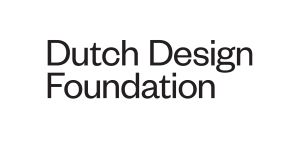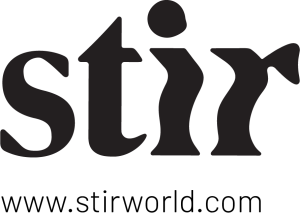Redesigning the talk show
The world’s information flow has been growing rapidly and knowledge around the world is growing at a faster rate than ever. Opportunity’s to gain access to this knowledge are everywhere, but also so omnipresent that it is becoming harder to filter and decide what information you want to invest your time in and focus on. Meanwhile processing information and creating knowledge have become an important part of our jobs and lives. We receive and digest information in an expanding array of media and platforms, up to a level that we have to make choices and get smarter in filtering what comes our way. Not only quality of content is becoming more and more important in this way, but also the way we digest it. We now have the chance, and maybe also the obligation, to look at content itself but also the delivery of that content; to explore, experiment with, design and innovate all aspects of our information driven time.
Dutch Design Week’s talk shows
The offer of information at Dutch Design Week, in the form of lectures, conferences, workshops and talk shows has steadily been growing over the years. While in 2012 DDW programmed 82 activities, there were 143 in the official program in 2017.
In 2017 there were multiple daily events and talk shows such as Create out Loud, Good design for a bad world, 100 days of learning, DDW talks, de Volkskrant Design Tafel, ClickNL and the WDE creative
embassies program. But despite the growth in numbers, the formats of most events do not change much and are closely related to similar events all over the world. Lectures take place on a stage, with a presentation on a square screen behind the speaker, sometimes an interview and some interaction with the audience at designated times mostly after the speaker has finished sending his or her message.
Why does it always have to be like that? Is the format simply that good? Are we satisfied with this or should we be looking at alternatives, new formats and setups? As we claim, DDW is different from other design events, because it concentrates on the designs of the future. Although during the event every imaginable discipline and aspect of design is on offer, the emphasis is on experiment, innovation and cross-overs.
This claim means we have the obligation to look at the future of our own event, just as we ask our participants to look at the future, and be at the forefront of the development of design events throughout the world. We should practice what we preach and innovate from within.
Create Out Loud
We would like to start innovating for this year’s Create out Loud, the talk show at MU during Dutch Design Week. For the fourth year in a row, MU will set the stage for a fresh and lively talk show during Dutch Design Week 2018.
Create out Loud provides a platform for their guests to take the audience on an animated trip into their eclectic design universes. It is not just about telling something about their own practice, but also to give us an insight of what inspires them and introduce us to new talents and people in and beyond the field of design. This guarantees Create out Loud to be interesting for a wide audience as well as dedicated professionals and designers.
The program is presented by Isolde Hallensleben and always English spoken.
More about previous editions of Create out Loud:
2017: http://www.mu.nl/en/exhibitions/create-out-loud-2017
2016: http://www.mu.nl/en/exhibitions/ddw-create-out-loud-2016
2015: http://www.mu.nl/en/exhibitions/create-out-loud
Staging your concept
We challenge designers to develop alternative ways to deal with Dutch Design Weeks flow of information, beginning with the talk show Create out Loud. We would like to host three special editions of the talk show where designers get the chance to work on new formats.
We’re looking for a pop-up setup or format that changes the experience, perception of the public and engages them in an innovative way with the topic or the guests of the show. How can we make narratives stronger and get the message across to our audience in a way that we will reach them on a more intimate level? The editorial team of Create out Loud as well as the very experienced host Isolde Hallensleben will collaborate on developing your format, content and speakers.
Themes
We have selected three themes, each tied to and zooming in on a different approach to changing the format talk show and asked specialist designers to come up with concepts fitting to these themes.
Immersive by Simon Dogger
How can we make a talk show more immersive? Get attendees to feel part of the subject we are exploring and transfer them to a state in which they become part of the narrative. This immersion could be obtained by working with tools like the senses, participation, digital technology or perhaps special guests. The goal would be to experience and thereby understand and remember in a way that is different from being a spectator in the regular sense.
Personalized by Arvid&Marie
Personalization is becoming rapidly more common and accessible. We are already used to add targeting companies and social media tracking our online behavior and customizing the content that comes our way. Technology makes it possible to track personal preferences and learns to assist you in making choices according to these preferences and interests. Are there ways that we can use these mechanics and apply them to a traditional talk show platform?
Make the content of a talk show smarter, more dynamic in fitting to the audiences preferences? Or learn from the audience during the talk show and engage them with new material afterwards? How can we make an event that serves a big crowd more personal as well? By knowing more about the audience, their interests, backgrounds and opinions we hope to produces talk shows will recognize the individual in the crowd and offer them something of personal value at the end of the night.
Surroundings by Tom Loois
Who, what, and how are the obvious questions. But where can also play a big role in the how an event is perceived. The same content can have another impact in different settings. Stage, décor, seating arrangements, special locations, physical interventions or using props will change the way you experience a show. Should the audience all be in one space? On a chair? Facing the speakers or maybe each other? We are looking for a concept where the physical environment will put the stories of our guests in an unusual perspective.
Criteria
Despite the fact that we want to encourage designers to radically redesign the layout of the talk show, there are some factors to take in to account when developing a concept for the setup:
- The show starts at 18:00h sharp and has a duration of 60 to 75 minutes. Afterdrinks and talks last until 20:00h at latest;
- The show is held at MU in de designated space for the Create out Loud program and should fit in this space;
- Each designer makes a design that reflects the theme he or she got assigned
- (Immersive / Personalized / Surroundings);
- The setup has to be built up and broken down on site during designated hours.During Dutch Design Week Mu hosts an exhibition that makes use of the MU space during the day and the stage will therefore not be available during the day. So think of smart solutions that can be produced beforehand and installed in a smart and efficient manner. Timeframe for building up is from 16.30 until 17.30. Timeframe for breaking down is between 20.00 and 24.00 dependent on program during the rest of the evening;
- Isolle Hallensleben is present as the host of the show;
- At least 50-100 people should be able to attend the show;
- Create out Loud is presented in English;
- It has to be possible for Create out Loud to document the show.
Timeline
Dates to be determined according to schedules of participants:
week 3 September Kickoff meeting
week 17 September Individual update meetings with MU and DDF
week 1 October Presentation concept
week 8 October Individual update meetings with MU and DDF
20 – 28 October Dutch Design Week / Create out Loud
22 October Personalized by Arvid&Marie
23 October Immersive by Simon Dogger
XX October Surroundings by Tom Loois
Conditions for participation
Please read the conditions for participation carefully, before signing up. By registering for this What if Lab, you automatically agree with the conditions as stated in the document you can find via THIS LINK.
How to sign up?
Registration for this What if Lab is closed.
Questions
If you have any questions about this What if Lab, please contact dries@dutchdesignfoundation.com.










